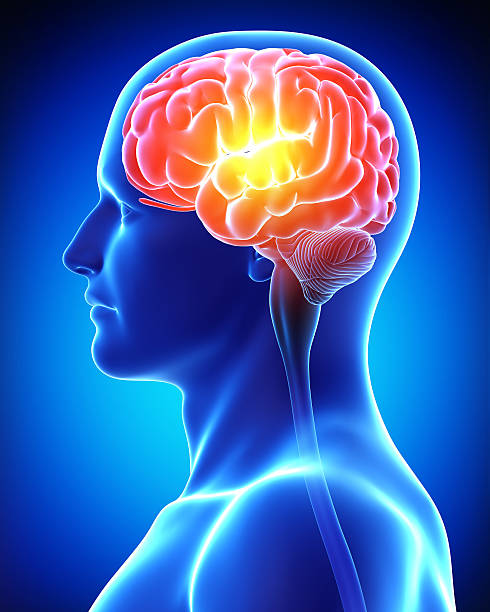For more than a century, the concept of intelligence has captivated scientists, educators, and the general public alike. Intelligence influences how we learn, solve problems, adapt to new situations, and interact with others. Yet, despite its importance, the question “What is intelligence?” remains one of the most debated in psychology and neuroscience. The Intelligence Quotient, or IQ, is often seen as the ultimate measure of human intellect—but the truth is far more complex. IQ tests provide valuable information about certain cognitive abilities, but they do not capture the full range of human potential. Understanding what IQ really measures, and what it does not, requires a deep look into the science of intelligence—its origins, its measurement, its biological and environmental foundations, and its broader implications for society and human life.
The Origins of the Concept of Intelligence
The study of intelligence began in the late 19th and early 20th centuries, when psychologists sought to understand why some individuals performed better than others in school or work. One of the pioneers was Sir Francis Galton, a cousin of Charles Darwin, who believed that intelligence was an inherited trait measurable through sensory and physical tests. His methods were primitive by modern standards, but they marked the beginning of psychometrics—the science of measuring mental abilities.
The real breakthrough came with the French psychologist Alfred Binet, who was commissioned by the French government in 1904 to develop a method to identify students who needed additional academic support. Binet and his collaborator Théodore Simon created a test that measured a range of cognitive skills such as memory, attention, problem-solving, and verbal ability. They introduced the concept of mental age—the age level at which a child performed compared to their chronological age. This became the foundation for the modern IQ test.
When Binet’s test was brought to the United States, it was adapted and standardized by Lewis Terman at Stanford University in 1916, becoming the Stanford–Binet Intelligence Scale. Terman introduced the term Intelligence Quotient (IQ), defined as the ratio of mental age to chronological age, multiplied by 100. Thus, an individual whose mental age matched their actual age would have an IQ of 100. This metric provided a simple way to compare cognitive ability across individuals.
The Evolution of IQ Testing
Over time, IQ testing evolved from a single-number score into a more nuanced measure of various cognitive skills. Modern IQ tests, such as the Wechsler Adult Intelligence Scale (WAIS) and the Wechsler Intelligence Scale for Children (WISC), assess multiple components of intelligence. These include verbal comprehension, perceptual reasoning, working memory, and processing speed.
The shift toward a multi-dimensional understanding of intelligence reflected the growing recognition that intelligence is not a single, uniform ability but a complex network of cognitive processes. IQ tests now aim to capture this complexity by evaluating different mental skills rather than relying solely on linguistic or mathematical performance.
However, despite improvements in testing methods, controversy has persisted. Critics argue that IQ tests may reflect cultural bias, educational background, and socioeconomic status as much as they measure innate ability. The question of whether intelligence is primarily determined by nature or nurture remains one of the central debates in psychology.
What IQ Actually Measures
IQ tests are designed to assess general cognitive ability—the capacity to reason, learn, and solve novel problems. This general ability, often referred to as g (for “general intelligence”), was first proposed by the British psychologist Charles Spearman in 1904. Spearman observed that individuals who performed well on one type of mental test tended to perform well on others, suggesting the existence of a common underlying factor.
The g factor represents the shared component of performance across different intellectual tasks. People with high g tend to learn quickly, think abstractly, and adapt effectively to new challenges. In practical terms, IQ scores correlate with academic achievement, job performance, and even certain health outcomes.
However, it is important to understand that IQ tests do not measure all aspects of intelligence. They focus primarily on analytical and logical reasoning, verbal ability, and problem-solving—skills that are highly valued in formal education and professional settings. They do not fully capture creativity, emotional understanding, practical judgment, or social intelligence—all of which play crucial roles in human success and well-being.
In essence, IQ measures certain types of cognitive efficiency, but it does not define the entirety of human intellect. Intelligence is a multifaceted construct, encompassing many different abilities that interact dynamically within the brain and the environment.
The Biological Foundations of Intelligence
The roots of intelligence lie in the brain—its structure, function, and chemistry. Neuroscientists have identified numerous factors that contribute to intellectual performance, from the size and connectivity of certain brain regions to the efficiency of neural signaling.
Research using brain imaging techniques such as MRI has revealed that general intelligence correlates with several neural characteristics. One of these is neural efficiency—the brain’s ability to process information quickly and accurately with minimal energy expenditure. Individuals with higher IQs often show more efficient brain activity patterns when performing cognitive tasks.
Another key factor is the prefrontal cortex, a region involved in executive functions such as reasoning, planning, and working memory. Studies have shown that people with higher intelligence scores tend to have more complex neural networks and greater white matter integrity in the prefrontal cortex, suggesting that faster communication between brain regions enhances cognitive performance.
Genetics also plays a substantial role in intelligence. Twin and adoption studies consistently show that IQ has a significant heritable component, with estimates suggesting that between 50% and 80% of the variation in intelligence can be attributed to genetic factors. However, genes do not act in isolation. Environmental influences—such as nutrition, education, family support, and exposure to stress—can enhance or suppress genetic potential. Intelligence, therefore, emerges from a dynamic interaction between biology and environment.
The Role of Environment in Shaping Intelligence
While genes provide the blueprint for cognitive potential, the environment determines how that potential is expressed. Early childhood experiences are particularly crucial. Adequate nutrition, access to education, emotional support, and exposure to stimulating environments all contribute to cognitive development. Conversely, deprivation, chronic stress, or lack of educational opportunity can hinder intellectual growth.
Studies have shown that interventions such as early childhood education, language exposure, and enriched environments can lead to significant gains in IQ, especially in children from disadvantaged backgrounds. The famous Flynn effect, named after the researcher James Flynn, refers to the observed rise in average IQ scores across generations during the 20th century. This phenomenon suggests that improvements in living conditions, education, and access to information can boost measured intelligence.
However, in recent years, the Flynn effect has plateaued or even reversed in some developed countries, indicating that environmental improvements may have reached their practical limits—or that changes in education, technology use, and social structures are influencing cognitive development in new ways.
Multiple Intelligences: Beyond the IQ Score
Traditional IQ tests focus on a narrow set of cognitive abilities, but psychologists have proposed broader frameworks for understanding intelligence. One of the most influential is Howard Gardner’s theory of multiple intelligences. Gardner suggested that human intelligence is not a single general ability but a collection of distinct capacities, such as linguistic, logical-mathematical, spatial, musical, bodily-kinesthetic, interpersonal, intrapersonal, and naturalistic intelligence.
This perspective challenges the idea that a single IQ score can capture the richness of human capability. A musician, an athlete, a mathematician, and a poet each demonstrate intelligence in different ways. Gardner’s theory, though controversial among psychometricians, has profoundly influenced education, encouraging more diverse ways of nurturing students’ strengths.
Similarly, Robert Sternberg’s triarchic theory of intelligence divides intelligence into three components: analytical (problem-solving and logical reasoning), creative (the ability to generate novel ideas), and practical (the capacity to adapt to real-world environments). Sternberg’s framework highlights that success in life depends on more than academic aptitude—it also involves creativity, adaptability, and common sense.
Emotional Intelligence and Social Understanding
Another important expansion of the concept of intelligence is emotional intelligence (EI), popularized by psychologist Daniel Goleman. Emotional intelligence refers to the ability to recognize, understand, and manage one’s own emotions, as well as to perceive and influence the emotions of others. It encompasses empathy, self-regulation, motivation, and social skills.
Research shows that emotional intelligence contributes significantly to personal and professional success, often more so than cognitive intelligence. People with high EI tend to form stronger relationships, handle stress better, and lead more effectively. While IQ might predict how well someone can solve abstract problems, EI predicts how well they can navigate the complexities of human life.
Neuroscientific studies have revealed that emotional intelligence involves regions of the brain such as the amygdala and the prefrontal cortex, which interact to regulate emotional responses and social behavior. This interplay underscores that rational thought and emotion are deeply intertwined; intelligence is not merely logical but also emotional.
Creativity: The Hidden Dimension of Intelligence
Creativity—the ability to generate new and useful ideas—is another dimension often overlooked by IQ tests. While creativity and intelligence overlap, they are not the same. A person can have an average IQ yet be highly creative, producing innovative solutions that high-IQ individuals might overlook due to rigid thinking patterns.
Psychologists studying creativity often distinguish between convergent thinking, which involves finding the single best solution to a problem (the kind of thinking IQ tests measure), and divergent thinking, which involves generating many possible solutions (a hallmark of creativity). Divergent thinking requires imagination, flexibility, and openness to experience—all qualities that standard IQ tests fail to measure adequately.
Brain imaging studies suggest that creativity involves both the default mode network, associated with spontaneous thought and imagination, and the executive control network, responsible for evaluating and refining ideas. The interaction between these systems allows creative individuals to balance freedom of thought with discipline and critical reflection.
Cultural Contexts of Intelligence
Intelligence cannot be fully understood without considering cultural context. What one society values as intelligent behavior may differ dramatically from another. For example, Western cultures often emphasize analytical reasoning and individual problem-solving, while many African and Asian cultures prioritize social harmony, practical wisdom, and collective understanding.
Cross-cultural research shows that cognitive abilities develop in response to the demands and values of specific environments. A hunter who can track animals using subtle environmental cues demonstrates a form of intelligence just as valid as a mathematician solving equations. Yet traditional IQ tests, developed primarily in Western contexts, often fail to account for these cultural variations.
Recognizing the cultural dimension of intelligence challenges the assumption that IQ scores can universally rank human ability. Intelligence is not only what the tests measure; it is also what societies define as valuable knowledge and skill.
The Predictive Power and Limitations of IQ
Despite its limitations, IQ remains one of the most reliable predictors of academic achievement and certain forms of job performance. Higher IQ scores correlate with better educational outcomes, higher income, and improved problem-solving ability in complex environments. IQ also shows moderate correlations with life expectancy and health, likely because individuals with higher cognitive ability tend to make healthier choices and navigate medical information more effectively.
However, IQ is not destiny. Many individuals with average IQs achieve extraordinary success through motivation, creativity, social skills, and perseverance. Conversely, high IQ does not guarantee happiness or wisdom. Intelligence without emotional maturity or ethical grounding can lead to destructive outcomes.
Moreover, IQ explains only a portion of human performance. Factors such as personality traits, emotional regulation, social support, and cultural opportunities play equally significant roles in shaping success. The tendency to equate IQ with worth or potential is therefore scientifically flawed and socially harmful.
The Ethics and Controversies of IQ Testing
IQ testing has a controversial history, marked by misuse and ethical challenges. In the early 20th century, IQ tests were sometimes used to justify racial and class-based discrimination, immigration restrictions, and even eugenic policies. Misinterpretation of test results led to harmful stereotypes about certain ethnic and social groups.
Although modern psychology rejects these pseudoscientific practices, debates continue about whether IQ tests perpetuate bias. Cultural differences, language barriers, and socioeconomic disparities can all influence test performance. Researchers have worked to design more culturally fair assessments, but complete neutrality is difficult to achieve because intelligence is intertwined with experience and opportunity.
Another ethical concern involves the use of IQ testing in education and employment. While such tests can identify learning disabilities or giftedness, they can also stigmatize individuals or limit access to opportunities if interpreted too narrowly. Responsible use of IQ testing requires understanding its context, purpose, and inherent limitations.
The Neuroscience of Learning and Cognitive Growth
One of the most exciting developments in modern science is the recognition that intelligence is not fixed. The brain’s ability to reorganize and form new connections—a property known as neuroplasticity—shows that cognitive ability can change throughout life.
Studies in cognitive psychology demonstrate that targeted training can improve specific mental skills such as memory, attention, and problem-solving. While such interventions may not permanently raise IQ scores, they enhance cognitive performance and adaptability. Moreover, lifelong learning, physical exercise, proper nutrition, and mental engagement all contribute to maintaining and improving brain health.
Mindset also plays a crucial role. Research by psychologist Carol Dweck distinguishes between a fixed mindset, which views intelligence as static, and a growth mindset, which sees it as developable through effort and learning. People with a growth mindset tend to persevere longer, embrace challenges, and ultimately achieve more. This perspective reframes intelligence not as a limit but as a potential that can expand with dedication and opportunity.
Intelligence in the Age of Artificial Intelligence
The rise of artificial intelligence has sparked new debates about the nature of human intelligence. Machines can now perform tasks once thought to require human cognition, such as language translation, image recognition, and strategic game play. Yet, while AI systems excel at processing vast amounts of data and executing defined tasks, they lack consciousness, creativity, and emotional understanding.
This contrast underscores that human intelligence is not merely computational. It is embodied, emotional, and socially grounded. Our ability to feel empathy, form relationships, and imagine new possibilities remains uniquely human. As AI continues to evolve, understanding the depth and diversity of human intelligence becomes even more important—not only to distinguish human potential but also to ensure that technology serves rather than replaces it.
The Future of Understanding Intelligence
The science of intelligence is still evolving. Advances in genetics, neuroscience, and artificial intelligence are providing new insights into how cognitive abilities arise and interact. Researchers are now exploring polygenic scores—combinations of genetic variants that influence cognitive traits—as well as brain connectivity patterns that underlie learning and memory.
Yet, as our understanding deepens, so too does the ethical responsibility to use this knowledge wisely. Intelligence should never be reduced to a number or used as a tool of exclusion. The future of intelligence research must emphasize diversity, equity, and the recognition that every human being possesses unique forms of cognitive strength.
Conclusion
The truth about IQ is that it measures something real but incomplete. Intelligence is not a single, fixed entity but a dynamic constellation of abilities—biological, psychological, emotional, and social—that together define how we understand and shape the world. IQ tests provide valuable insights into certain cognitive functions, but they do not capture the full scope of human intellect, creativity, or wisdom.
Human intelligence is both inherited and learned, both rational and emotional, both individual and collective. It grows through curiosity, experience, and connection. The measure of a mind cannot be confined to a test score but must be seen in the richness of its thoughts, the depth of its empathy, and the impact of its actions.
To truly understand intelligence, we must move beyond the question of how smart someone is and ask instead: in what ways are they intelligent, and how can that intelligence be nurtured for the betterment of humanity?






